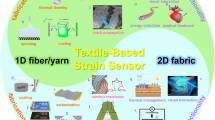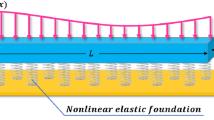Abstract
Instrumented indentation test has become a popular method for characterization of materials of small volume such as those constitute the micro-electro-mechanical devices, micro-electronic packages and thin film. Berkovich indenter is one of the most popular indenter tips employed in the tests. The present study involves the finite element simulation of indentation by Berkovich-family of indenters to establish the load-displacement relations for elasto-plastic materials obeying power law. Effects of friction at the contact surfaces, which have been ignored by most of the researchers are considered in the analyses. Extensive 3-dimensional finite element analyses covering a wide practical range of materials have been carried out and the results adopted for material characterization via artificial neural network model based on an efficient reverse analysis algorithm. Direct mapping of the characteristics of the indentation curves to the material properties are performed and the characteristics of the network model deliberated. The tuned network can then be adopted to predict the mechanical properties of a new set of materials of small volume in micro-electro-mechanical components.


















Similar content being viewed by others
References
Doerner MF, Nix WD (1986) A method for interpreting the data from depth-sensing indentation measurements. J Mater Res 1:601–609
Oliver WC, Pharr GM (1992) An improved technique for determining hardness and elastic modulus using load and displacement sensing indentation experiments. J Mater Res 7:1564–1583
Giannakopoulos AE, Suresh S (1999) Determination of elastoplastic properties by instrumented sharp indentation. Scr Mater 40:1191–1198
Dao M, Chollacoop N, Van Vliet KJ, Venkatesh TA, Suresh S (2001) Computational modeling of the forward and reverse problems in instrumented sharp indentation. Acta Mater 49:3899–3918
Bucaille JL, Stauss S, Felder E, Michler J (2003) Determination of plastic properties of metals by instrumented indentation using different sharp indenters. Acta Mater 51:1663–1678
Xu ZH, Rowcliffe D (2002) Method to determine the plastic properties of bulk materials by nanoindentation. Phil Mag 82:1893–1901
Swaddiwudhipong S, Tho KK, Liu ZS, Zeng K (2005) Material characterization based on dual indenters. Int J Solids Struct 42:69–83
Vapnik VN (1995) The nature of statistical learning theory. Springer, New York
Huber N, Tsagrakis I, Tsakamakis C (2000) Determination of constitutive properties of thin metallic films on substrates by spherical indentation using neural networks. Int J Solids Struct 37:6499–6516
Tho KK, Swaddiwudhipong S, Liu ZS, Hua J (2004) Artificial neural network model for material characterization by indentation. Model Simul Mater Sci Eng 12:1055–1062
Swaddiwudhipong S, Tho KK, Liu ZS, Hua J, Ooi NSB (2005) Material characterization via least squares support vector machines. Model Simul Mater Sci Eng 13:993–1004
ABAQUS/Standard User’s Manual Version 6.3 (2002), Hibbit, Karlsson and Sorensen
Swaddiwudhipong S, Hua J, Tho KK, Liu ZS (2005) C0 solid elements for materials with strain gradient effects. Inter J Numer Methods Eng 64:1400–1414
Tho KK (2005) Formulation of constitutive relations based on indentation tests. PhD thesis. National University of Singapore, Singapore
Mata M, Alcala J (2004) The role of friction on sharp indentation. Mech Phys Solids 52:145–165
Engineer’s handbook (2004–2006) http://www.engineershandbook.com/Tables/frictioncoefficients.htm
Chollacoop N, Dao M, Suresh S (2003) Depth-sensing instrumented indentation with dual sharp indenters. Acta Mater 51:3713–3729
Swaddiwudhipong S, Hua J, Tho KK, Liu ZS (2006) Equivalency of Berkovich and conical load-indentation curves. Model Simul Mater Sci Eng 14:71–82
Venkatesh TA, Van Vliet KJ, Giannakopoulos AE, Suresh S (2000) Determination of elasto-plastic properties by instrumented sharp indentation: guidelines for property extraction. Scr Mater 42:833–839
Acknowledgments
The authors gratefully acknowledge the supports from the Singapore Ministry of Education’s ACRF Tier 1 Funds through grants R-214-000-165-112 and R-214-000-186-112.
Author information
Authors and Affiliations
Corresponding author
Rights and permissions
About this article
Cite this article
Swaddiwudhipong, S., Harsono, E., Hua, J. et al. Reverse analysis via efficient artificial neural networks based on simulated Berkovich indentation considering effects of friction. Engineering with Computers 24, 127–134 (2008). https://doi.org/10.1007/s00366-007-0081-y
Received:
Accepted:
Published:
Issue Date:
DOI: https://doi.org/10.1007/s00366-007-0081-y




